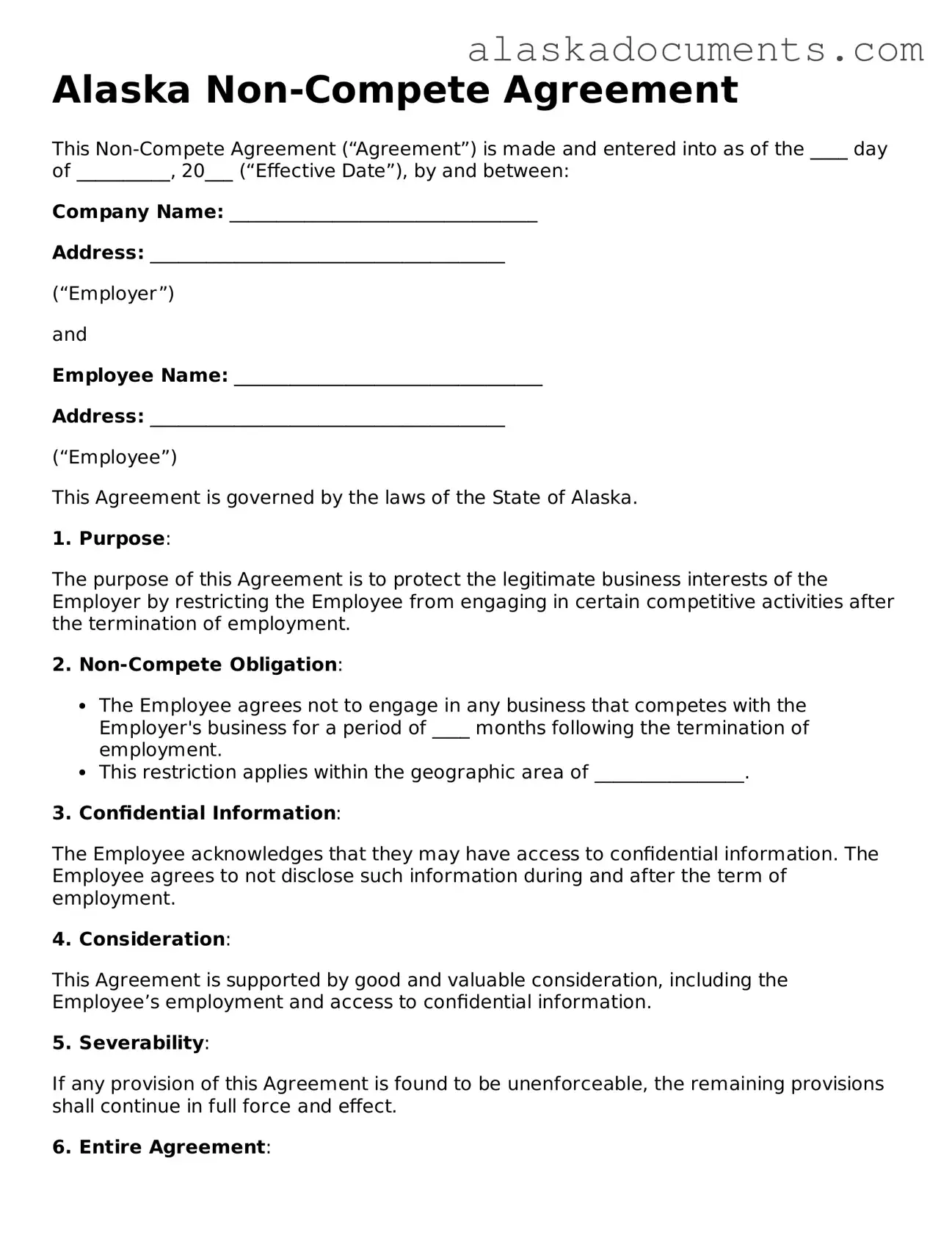Alaska Non-Compete Agreement
This Non-Compete Agreement (“Agreement”) is made and entered into as of the ____ day of __________, 20___ (“Effective Date”), by and between:
Company Name: _________________________________
Address: ______________________________________
(“Employer”)
and
Employee Name: _________________________________
Address: ______________________________________
(“Employee”)
This Agreement is governed by the laws of the State of Alaska.
1. Purpose:
The purpose of this Agreement is to protect the legitimate business interests of the Employer by restricting the Employee from engaging in certain competitive activities after the termination of employment.
2. Non-Compete Obligation:
- The Employee agrees not to engage in any business that competes with the Employer's business for a period of ____ months following the termination of employment.
- This restriction applies within the geographic area of ________________.
3. Confidential Information:
The Employee acknowledges that they may have access to confidential information. The Employee agrees to not disclose such information during and after the term of employment.
4. Consideration:
This Agreement is supported by good and valuable consideration, including the Employee’s employment and access to confidential information.
5. Severability:
If any provision of this Agreement is found to be unenforceable, the remaining provisions shall continue in full force and effect.
6. Entire Agreement:
This Agreement constitutes the entire agreement between the parties with respect to the subject matter herein and supersedes all prior agreements or understandings.
IN WITNESS WHEREOF, the parties have executed this Agreement as of the date written above.
Employer Signature: ____________________________
Date: ________________
Employee Signature: ____________________________
Date: ________________
